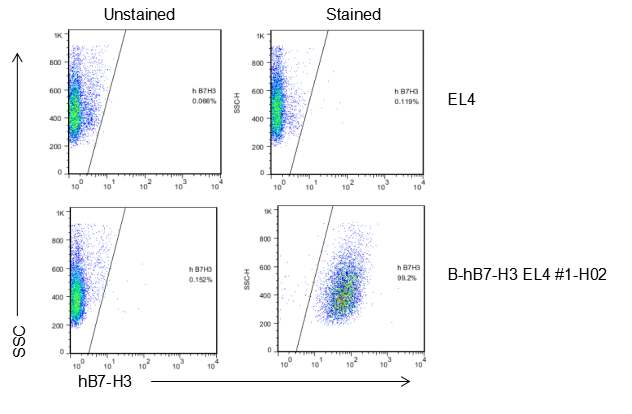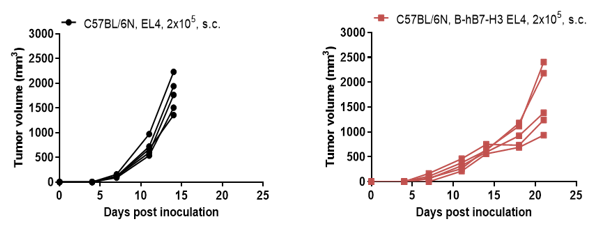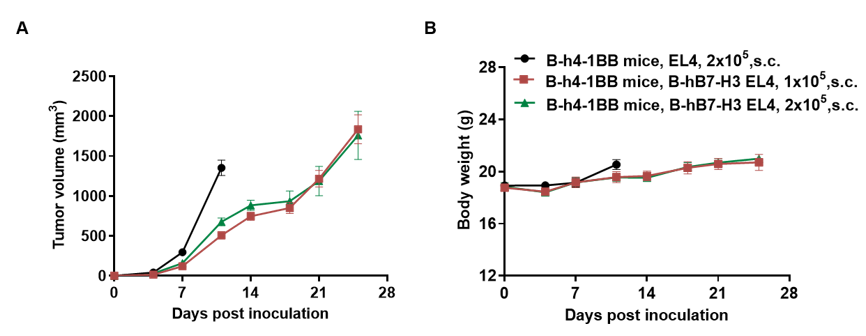|
Common name |
B-hB7-H3 EL4 | Catalog number | 310705 |
| Aliases | 4Ig-B7-H3, CD276, B7RP-2 | Disease | Lymphoma |
|
Organism |
Mouse | Strain | C57BL/6N |
| Tissue types | Lymphoma | Tissue | T lymphocyte |
Description
The mouse B7h3 gene was replaced by human B7H3 coding sequence in B-hB7-H3 EL4 cells. Human B7-H3 is highly expressed on the surface of B-hB7-H3 EL4 cells.
Application
B-hB7-H3 EL4 cells have the capability to establish tumors in vivo and can be used for efficacy studies.
Targeting strategy
Gene targeting strategy for B-hB7-H3 EL4 cells. The exogenous promoter and human B7H3 coding sequence was inserted to replace part of murine exon 3 and all of exon 4. The insertion disrupts the endogenous murine B7h3 gene, resulting in a non-functional transcript.
Protein expression analysis


Tumor growth curve of individual mice

B-hB7-H3 EL4 tumor growth of individual mice. B-hB7-H3 EL4 cells (2x105) and wild-type EL4 cells (2x105) were subcutaneously implanted into C57BL/6N mice (female, 6-9-week-old, n=5). As shown in panel, B-hB7-H3 EL4 cells were able to establish tumors in vivo and can be used for efficacy studies.

Subcutaneous homograft tumor growth of B-hB7-H3 EL4 cells. B-hB7-H3 EL4 cells and wild-type EL4 cells were subcutaneously implanted into B-h4-1BB mice (female, 7-week-old, n=6). Tumor volume and body weight were measured twice a week. (A) Average tumor volume. (B) Body weight. Volume was expressed in mm3 using the formula: V=0.5 X long diameter X short diameter2. As shown in panel A, B-hB7-H3 EL4 cells were able to establish tumors in vivo and can be used for efficacy studies. Values are expressed as mean ± SEM.










